In person meetings:
Anchorage Loussac Library Anchorage Moose Room-reception begins at 4:30pm
Homer Islands and Ocean Visitor Center, 95 Sterling Highway
Soldotna Kenai National Wildlife Refuge Visitor Center, Ski Hill Road
Fairbanks Watershed School 4975 Decathlon
For those outside these cities: you can download the presentation from this page the day of the meeting and call in a few minutes before 5pm (866) 556-2149, code 8169747#
Guest Speaker Presentation: Nicole Whittington-Evans, Defenders of Wildlife, Alaska Program Director and former Friends’ Board Member
Wildlife and Wildlands in These Trying Times
What are the prospects for our Alaska environment and wildlife given recent reports, administration actions, regulation changes and proposed projects? How will key species and wildlife areas be affected? How do we keep from being overwhelmed by the sheer volume of these changes and proposed projects competing for our attention and response? Nicole, one of Alaska’s most dedicated wildlife advocates, will give her perspective on where we are now and what we can do as individuals and groups to face these alarming proposals and predictions for our state and our planet.
Defenders’ Alaska Program Director, Nicole Whittington-Evans, started out her environmental career studying and working on wildlife issues. During the 1990’s, she received an MS in Environmental Studies from the University of Montana, where she focused on Alaska’s predator control efforts, served for a time as the Executive Director of the Alaska Wildlife Alliance, and was elected or invited to participate in a number of wildlife stakeholder groups, including an appointment to Alaska’s Board of Game by Governor Tony Knowles in 1997. For the past twenty-one years she worked on public lands and wilderness issues at The Wilderness Society and served as the Alaska Director for the organization from 2009 to 2018. She also served for three years starting in 2007 on the board of the Friends of Alaska National Wildlife Refuges as the Outreach Coordinator. Throughout her environmental career she has blended science and policy to advance the strongest protections possible for wildlife and public lands conservation. Nicole’s interest in environmental work began when she was an Instructor for the National Outdoor Leadership School, and she has traveled throughout much of Alaska’s backcountry by foot, ski, raft and kayak. As a mountaineer she was part of two successful summit teams on Denali (20,320’), including participating in the first all-women’s traverse of the mountain in 1988, and on Argentina’s Aconcagua (23,000’). She lives with her husband and two daughters in the foothills of the Chugach Mountains, where she continues to recreate and enjoy wildlife with her family in Alaska’s unmatched wild country.
Download Presentation:
PowerPoint version: 1909-friends-of-alaska-nwrs-presentation
PDF version:
Agenda:
Introductions and Discussion (5 minutes)- Introductions: Where do you live?
- New People: Why did you join the call today?
- Reminder to please mute yourselves when you aren’t talking
Board Activities/Decisions–
- Refuge Projects and Reports
Speaker/Presentation (30-40 minutes) –
Nicole Whittinton-Evans
Topic: Wildlife and Wildlands in these Trying Times
Next Meeting: Tuesday, October 15, 5-6pm Guest Speaker TBA
Six meetings yearly: January, February, March, April, September, October
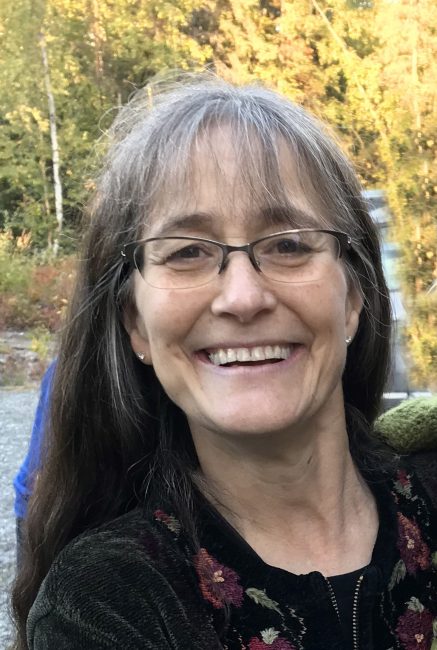
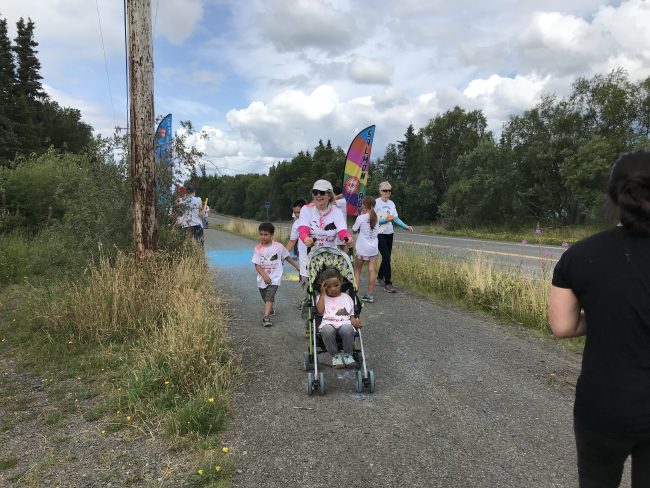
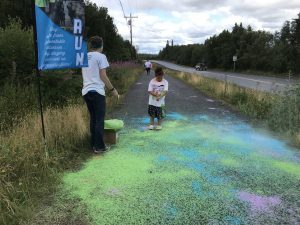 Walkers and runners were able to view informational signs along the route with health facts that incorporated Refuge and outdoor themes. For example, in the red section for substance abuse avoidance, there was a sign showing hikers on Togiak Refuge and the message is “Get a Natural High – Visit a National Wildlife Refuge!”
Walkers and runners were able to view informational signs along the route with health facts that incorporated Refuge and outdoor themes. For example, in the red section for substance abuse avoidance, there was a sign showing hikers on Togiak Refuge and the message is “Get a Natural High – Visit a National Wildlife Refuge!”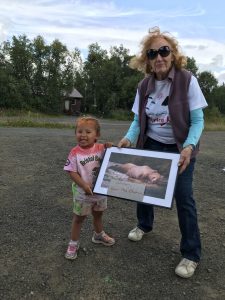
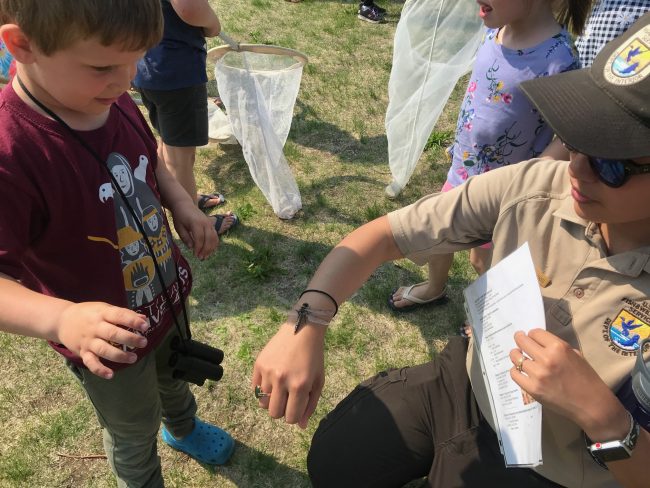
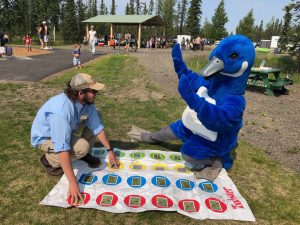 After catching and identifying dragonflies, participants had an array of activities and games to choose from including Dragonfly Twister, dragonfly q-tip art, face painting, or taking a photo with Puddles the Blue Goose at the photo booth.
After catching and identifying dragonflies, participants had an array of activities and games to choose from including Dragonfly Twister, dragonfly q-tip art, face painting, or taking a photo with Puddles the Blue Goose at the photo booth.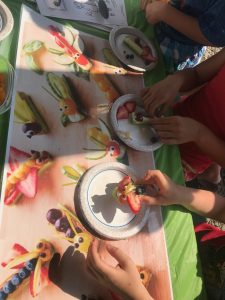
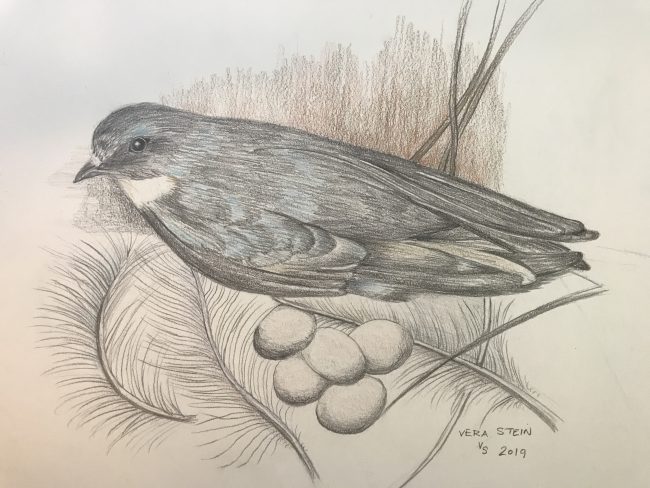
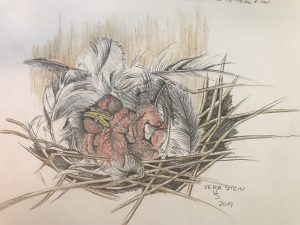
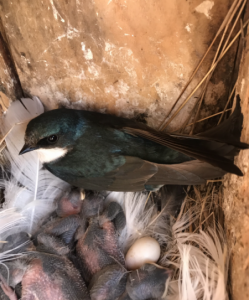


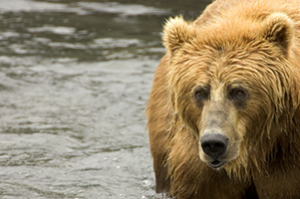

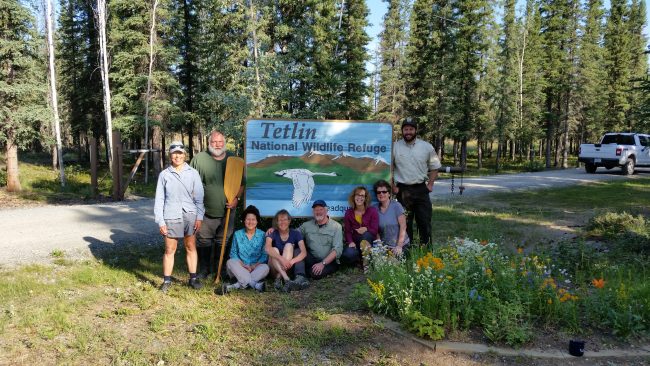
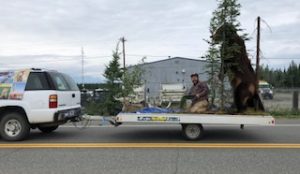
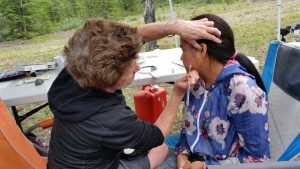

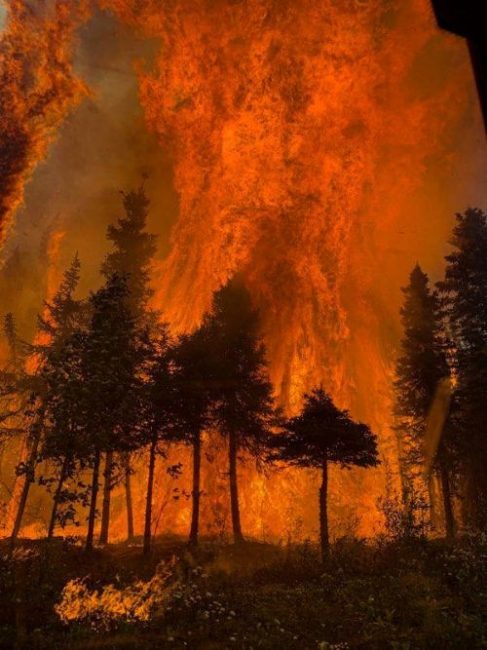
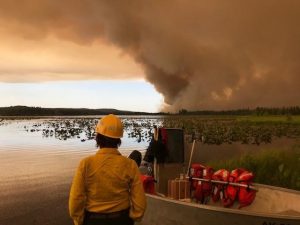 A real benefit of this fire is that it is burning up heavy fuels which will make the towns and the refuge much safer for decades from the risk of a more catastrophic fire. Kenai Refuge biologists learned in earlier studies that black spruce burns about every 80 years, and it has been 80 years since this area last burned. In the higher elevations, the fire is burning up spruce bark beetle-killed white spruce. It is a fire-dependent landscape and will adapt. Positive impacts on wildlife will come as the fire will alter the habitat to an earlier successional stage where “moose food” such as aspen and birch will sprout in the burned areas. The fire has exhibited some extreme fire behavior burning in the tundra and riparian areas. The negative impacts of that on wildlife are yet to be determined. The biggest human impact from the fire has been the smoke which has been particularly hard on communities east of the refuge. Numerous refuge trails, campgrounds, and public use cabins have been closed due to smoke and fire crews working in the area but none have been damaged so far. The famed Swan Lake Canoe Route, just west of the fire, has also not been impacted.
A real benefit of this fire is that it is burning up heavy fuels which will make the towns and the refuge much safer for decades from the risk of a more catastrophic fire. Kenai Refuge biologists learned in earlier studies that black spruce burns about every 80 years, and it has been 80 years since this area last burned. In the higher elevations, the fire is burning up spruce bark beetle-killed white spruce. It is a fire-dependent landscape and will adapt. Positive impacts on wildlife will come as the fire will alter the habitat to an earlier successional stage where “moose food” such as aspen and birch will sprout in the burned areas. The fire has exhibited some extreme fire behavior burning in the tundra and riparian areas. The negative impacts of that on wildlife are yet to be determined. The biggest human impact from the fire has been the smoke which has been particularly hard on communities east of the refuge. Numerous refuge trails, campgrounds, and public use cabins have been closed due to smoke and fire crews working in the area but none have been damaged so far. The famed Swan Lake Canoe Route, just west of the fire, has also not been impacted. 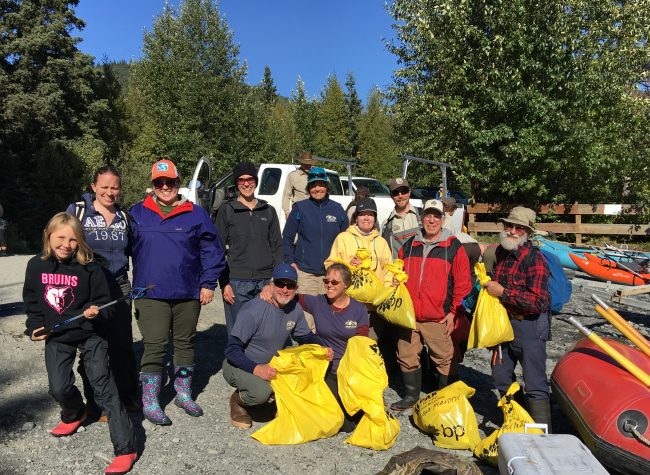



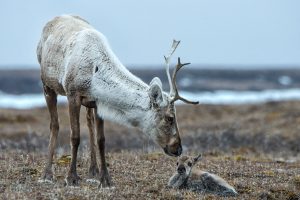
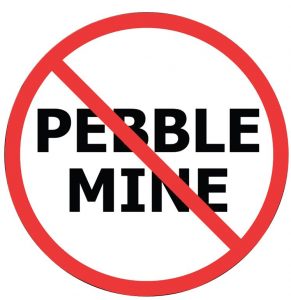 Friends joined 13 conservation organizations on the submission of a 433-page comment on the Corps of Engineers Pebble Mine DEIS. These comments were prepared and submitted by Trustees for Alaska and the Sierra Club Environmental Law Program. The breadth and contents of this extensive set of comments and its numerous attachments document the grossly inadequate DEIS prepared by the Corps. We hope that this horrible project with its potential impacts on Bristol Bay salmon fisheries and many national wildlife refuges will ultimately be stopped after a 15-year battle. We thank the staffs of Trustees and Sierra Club for this monumental effort.
Friends joined 13 conservation organizations on the submission of a 433-page comment on the Corps of Engineers Pebble Mine DEIS. These comments were prepared and submitted by Trustees for Alaska and the Sierra Club Environmental Law Program. The breadth and contents of this extensive set of comments and its numerous attachments document the grossly inadequate DEIS prepared by the Corps. We hope that this horrible project with its potential impacts on Bristol Bay salmon fisheries and many national wildlife refuges will ultimately be stopped after a 15-year battle. We thank the staffs of Trustees and Sierra Club for this monumental effort.